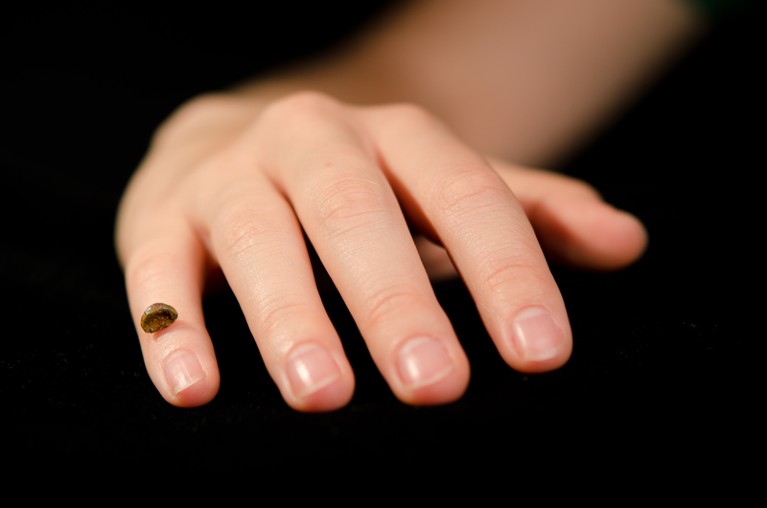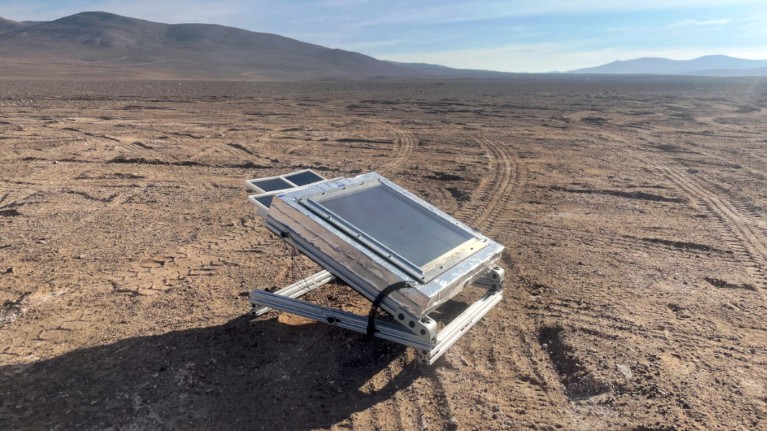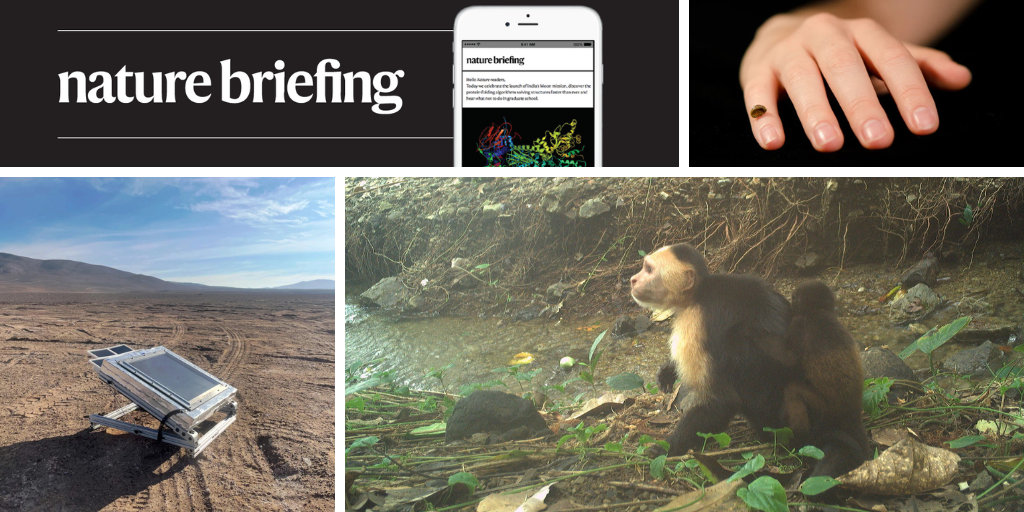You have full access to this article via your institution.
Hello Nature readers, would you like to get this Briefing in your inbox free every day? Sign up here.

(Brendan Barrett/Max Planck Institute of Animal Behavior)
Young male capuchin monkeys (Cebus capucinus imitator) have been observed ‘kidnapping’ infant howler monkeys (Alouatta palliata coibensis) in Panama. Behavioural ecologist and co-author Zoë Goldsborough said it was “shocking” to discover scenes of capuchins carrying baby howlers in footage captured on camera traps. “We’ve not seen anything like this in the animal kingdom,” she says. “A hopeful part of me wants to believe some escaped and went back to their mothers,” says anthropologist and co-author Margaret Crofoot. “But we don’t know.”
Reference: Current Biology paper
Artificial intelligence (AI) chatbots are more persuasive in online debates than people are — especially when they’re able to personalize their arguments using information about their opponent. Researchers pitted 900 people in the United States against either another person or OpenAI’s GPT-4 for 10-minute online debates on a sociopolitical issue. When neither the human nor AI had access to their opponent’s background information, GPT-4 was about as persuasive as a human. But if the basic demographic information from an initial survey was given to opponents before the debate, GPT-4 out-argued humans 64% of the time.
Reference: Nature Human Behaviour paper
A teenager with a rare immune disorder has become the first person to receive treatment with a cutting-edge gene-editing technique called prime editing — a member of the CRISPR family of technologies. A month after his mutation was corrected, he had experienced no serious side effects and the therapy seemed to have given his immune system a substantial boost — but it will take months to be certain that the edited stem cells are thriving. Despite these early signs of success, biotechnology company Prime Medicine says it will not develop the expensive therapy any further on its own. “It boils down to an issue not just of science and technology, but of economics,” says chemical biologist David Liu.
Reference: Prime Medicine press release (not peer reviewed)
Features & opinion

A replica of an ancient finger bone found in Denisova Cave. DNA extracted from this bone was used to first identify the Denisovan lineage.Credit: Max Planck Institute for Evolutionary Anthropology
In 2008, a tiny fingertip rewrote human history when DNA sequencing revealed that it belonged to a previously unknown group of hominins: Denisovans. Further research revealed that they interbred with modern humans and were once widespread across Asia. In the past few years, more fossils have emerged that are helping to flesh out who Denisovans were and how exactly they fit into our family tree.
Comprehensive analyses of how climate change affects hurricanes overall — rather than how it affects specific aspects such as their frequency and intensity — are lacking. This makes it difficult to assess the overall hazard such events might pose in a warming climate, argue an atmospheric scientist and a meteorologist. “Although the weight of evidence suggests that hurricane hazard will increase in the United States, there remains a high level of uncertainty,” the authors write. “How to handle these uncertainties is ultimately a subjective and context-dependent question.”
Sometimes fictional narratives can form exceptionally vivid and emotionally charged memories, writes cognitive psychologist Osman Görkem Çetin. But how can a scene from The Last Airbender, for example, make an impact on par with events we really experienced? It seems that movies tend to be remembered in more detail than books, and that video games — in which we play as the protagonist — are recalled with even more confidence. And people who experience greater empathy seem to be more likely to engage with made-up stories in ways that form lasting memories.
Image of the week

Credit: Chad T Wilson
A device powered only by sunshine can harvest drinkable water from the air — even in one the world’s driest deserts. The prototype uses a spongy hydrogel that sucks water from the air during the cool night-time. Solar energy heats the gel during the day to release the moisture onto a condenser. In the extreme conditions of Chile’s Atacama Desert, the device — which could cost around US$150 per square metre of solar panel and last for 20 years — produced 0.6 litres per square metre per day. (Nature Research Highlight | 3 min read)
Today I’m enjoying the life story of geologist Kari Egede Henningsmoen, who is still publishing research articles at the age of 101. “I’ve lived a completely ordinary life,” says Henningsmoen, who has no particular advice for reaching your centenary. As for her many research projects, none stands out — because she loved all of them. “Everything I’ve researched has been exciting,” she says. Sounds like a recipe for living to me.
Lucky for me, I also love what I do, and I’m always keen to learn ways to do it better. Please let me know your feedback on this newsletter at [email protected].
Thanks for reading,
Flora Graham, senior editor, Nature Briefing
With contributions by Jacob Smith
Want more? Sign up to our other free Nature Briefing newsletters:
• Nature Briefing: Careers — insights, advice and award-winning journalism to help you optimize your working life
• Nature Briefing: Microbiology — the most abundant living entities on our planet — microorganisms — and the role they play in health, the environment and food systems
• Nature Briefing: Anthropocene — climate change, biodiversity, sustainability and geoengineering
• Nature Briefing: AI & Robotics — 100% written by humans, of course
• Nature Briefing: Cancer — a weekly newsletter written with cancer researchers in mind
• Nature Briefing: Translational Research — covers biotechnology, drug discovery and pharma


